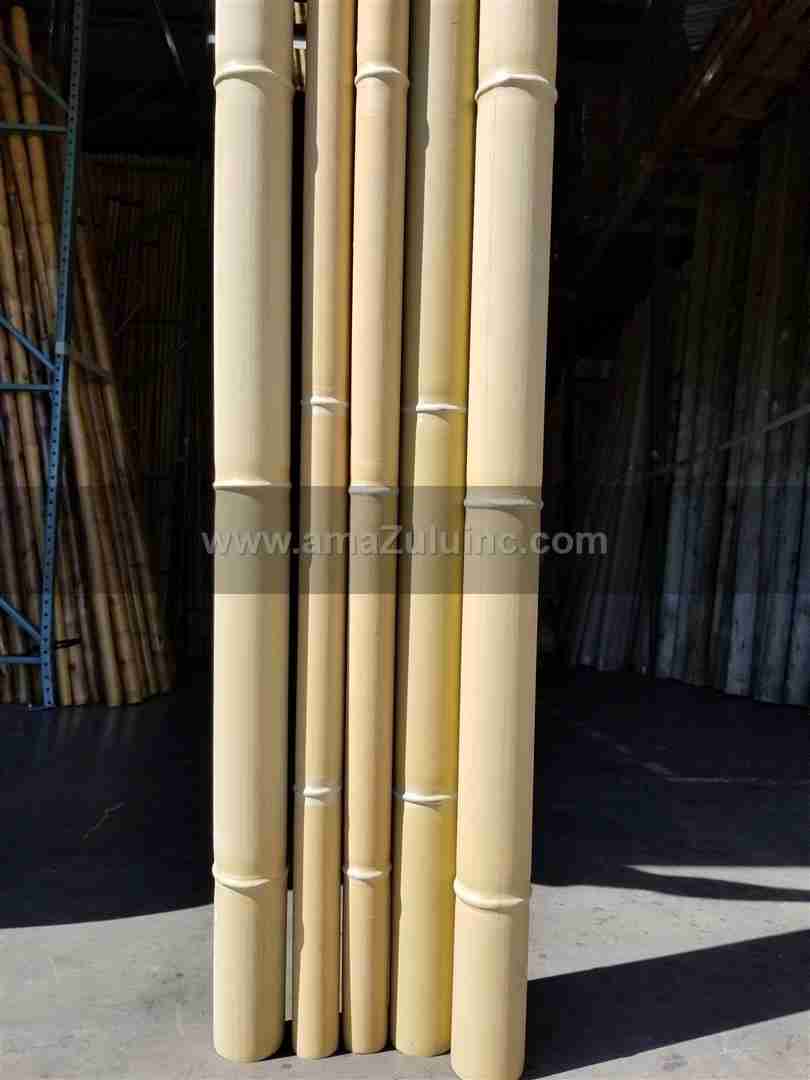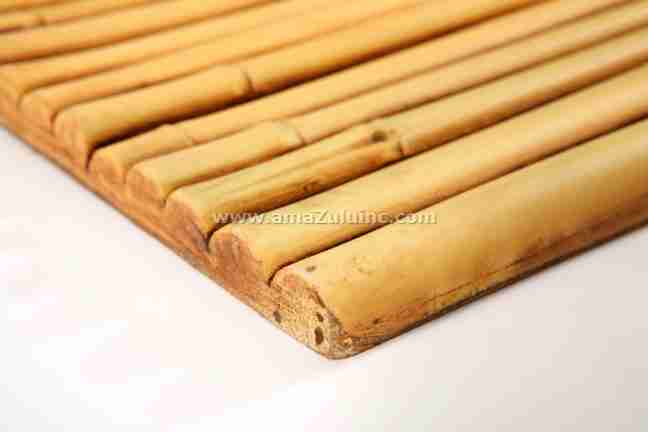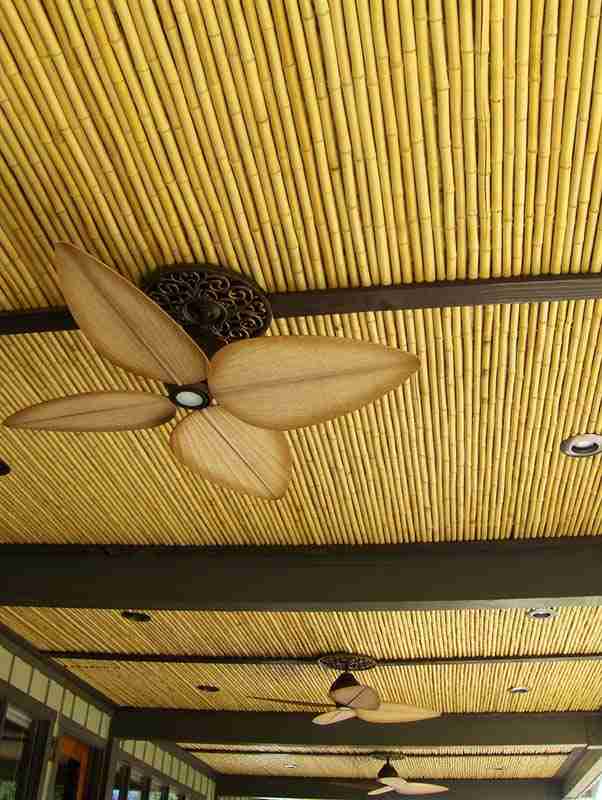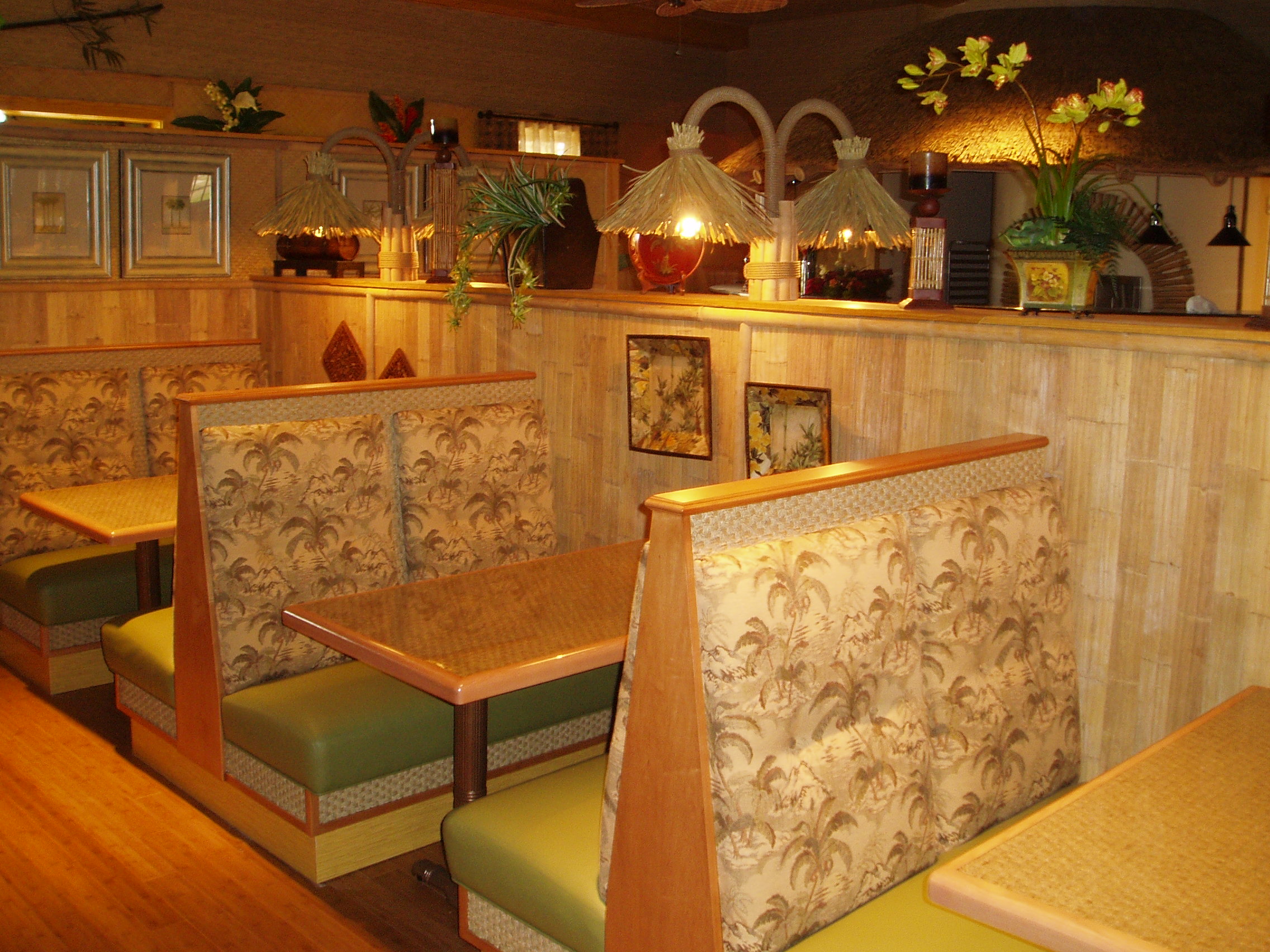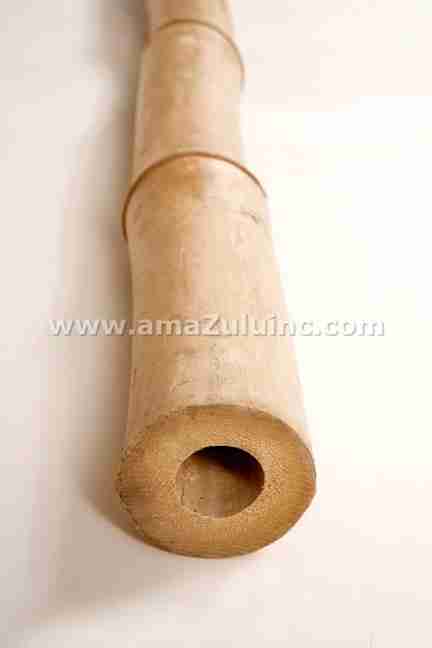The tropical ambiance of a tiki bar, the authentic feel of a bamboo fence, or the elegant touch of a bamboo-accented water feature—each of these designs hinges on one critical decision: choosing the right bamboo poles.
With thousands of species and both natural and synthetic options available, selecting the right type is essential to achieving durability, aesthetics, and functionality. This guide will help you make an informed decision so your bamboo selection stands the test of time.
Natural vs. Artificial Bamboo Poles: Choosing the Right Type
The most important decision when selecting bamboo poles is whether to use natural or artificial materials. Each option offers unique benefits depending on your project requirements, budget, and environmental conditions.
Natural Bamboo: Aesthetic Appeal with Maintenance Considerations
Natural bamboo provides an authentic, organic look that many designers prefer. However, its longevity depends on the environment and level of maintenance.
“If you’re in dry parts of Texas or Arizona, natural can last you 10-15 years even outside,” explains Tristan Ishtar, vice president of sales at amaZulu.
Artificial Bamboo: Durability with Modern Innovation
For maximum durability and minimal maintenance, artificial bamboo is an advanced alternative that retains the aesthetic appeal of natural bamboo without the vulnerabilities.
“Artificial bamboo is a lot better option,” Tristan says. “It’s fire retardant, won’t fade, comes with 10-year warranty, and can be used indoor/outdoor.”
Artificial bamboo also enables creative applications that natural bamboo cannot withstand. “Homeowners make fountains where water runs down into a bamboo pole. You can’t do that with real bamboo,” Tristan explains.
Cost Considerations: Short-Term vs. Long-Term Investment
While natural bamboo generally has a lower upfront cost, ongoing maintenance and potential replacement costs can add up over time.
“Natural is a lower upfront cost,” Tristan notes. “You’ll have to change it out, but it’ll still give you many years.”
For indoor applications where moisture exposure is limited, natural bamboo remains a cost-effective option. “For indoor applications, natural bamboo may be better because it’s less expensive,” Tristan explains.
Creative Applications and Real-World Examples
Understanding bamboo types and installation methods is essential, but seeing how these versatile poles are used in real-world projects can be inspiring.
- Restaurant Ambiance: Lotus, a Las Vegas restaurant, used approximately 1,200 bamboo poles to create an immersive backdrop and intricate latticework. “They used all bamboo for the backdrop, the lattice work is also bamboo, just great architectural stuff,” Tristan shares.
- Resort Lighting Solutions: “A Margaritaville housing development used them to hold up strings of lights,” Tristan says.
- Concealing Utilities: “Water parks will use it to hide pipes, so now you have this bamboo look instead of corrugated conduit,” Tristan notes, demonstrating how bamboo transforms necessary infrastructure into design elements.
- Beach Wedding Settings: “We have wedding companies that do beach arbors with them,” Tristan says, highlighting bamboo’s role in creating memorable experiences.
- Custom Furniture: “We had a guy who made a gorgeous custom bed for a client and he used 12-foot poles,” Tristan recalls, showing how bamboo extends beyond decorative applications into functional furniture pieces.
- Creative Animal Habitats: “We had someone who used it for his lizard’s terrarium,” Tristan mentions, demonstrating bamboo’s versatility in unexpected applications.
Matching Bamboo Species to Your Application
With an estimated 1,600-1,800 bamboo species worldwide, choosing the right variety for your project is essential.
“Match the species to the application. If you’re doing something structural, you better get structural bamboo,” Tristan warns. “If you’re just putting it on a ceiling, Tonkin works because people won’t bump into it.”
Structural Bamboo (Solid Bamboo)
- Tre-Gai Bamboo: Prized for its straight growth and thick walls, making it excellent for furniture and structural applications.
- Guadua Bamboo: One of the strongest species, ideal for construction and load-bearing applications. “You can treat them like dimensional lumber,” Tristan explains.
Non-Structural Bamboo
- Tonkin Bamboo: Offers a uniform appearance, making it ideal for decorative applications. “It will crack by itself, but it’s very cheap pricewise,” Tristan notes.
Ready to Select the Perfect Bamboo for Your Project?
Choosing the right bamboo poles is just the first step in creating an authentic tropical atmosphere or themed environment. With over two decades of experience sourcing materials directly from global villages, amaZulu offers an extensive selection of both natural and artificial bamboo poles, along with the expertise to guide you through the selection process.
Don’t leave your bamboo selection to chance. Contact amaZulu today to discuss your project needs with their knowledgeable team. Whether you’re developing a major resort attraction, refreshing a restaurant interior, or creating a backyard paradise, amaZulu’s commitment to quality materials and sustainability ensures your vision becomes a lasting reality.

